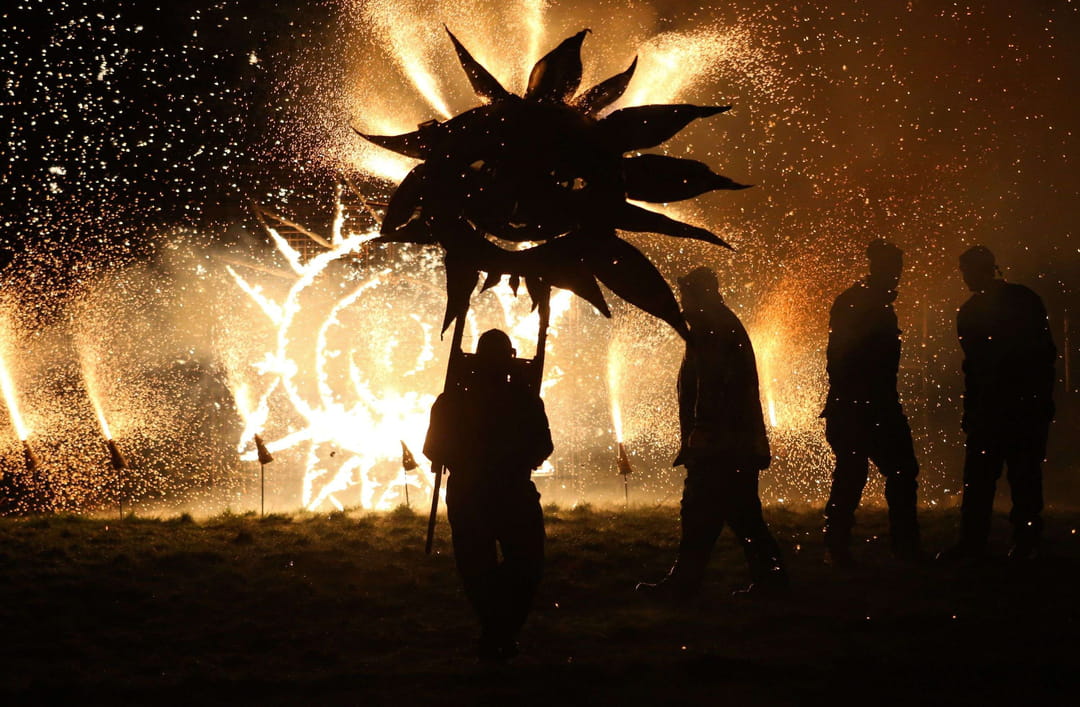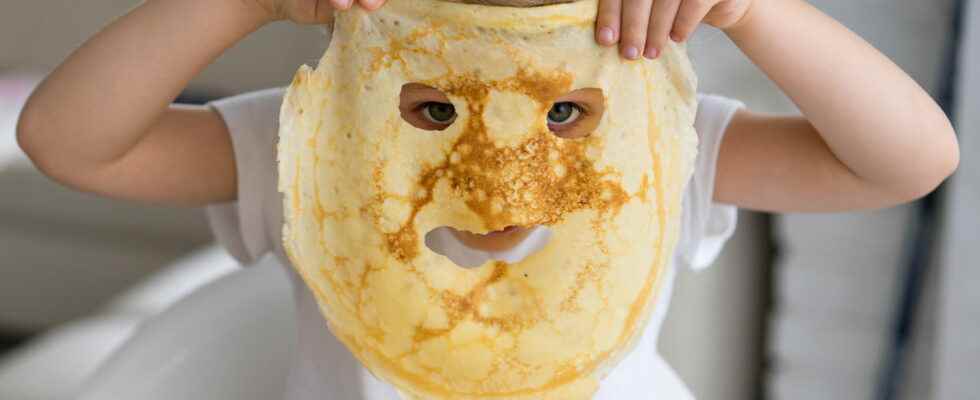CANDLEMAS. This pancake tradition celebrated this Thursday, February 2, 2023 originates from a tribute to the return of the Sun, and especially to the arrival of spring. Meaning, symbolism, recipe, everything you need to know about Candlemas.
[Mis à jour le 2 février 2023 à 10h31] At Candlemas, if we eat pancakes, it is not at all out of respect for a biblical tradition. Its name, Chandeleur, comes from further afield. It relates to the noun “candela” in Latin, which refers to the return of light. Indeed, pancakes, if they are especially good, represent the sun and the longer days ahead.
The beginning of February is marked by an increasingly earlier sunrise in the east. And what could be better than golden brown pancakes to celebrate the return of the sun? This origin merges with many traditions and superstitions dating back several centuries, such as that of using the year’s flour in the countryside so as not to harm it in the months to come. Tasting a sweet dough in the shape of a gold coin – which you put in your hand to flip the pancakes – would also be a way to curry favor with your own finances.
“Simple as pancakes”
La Chandeleur owes its name to the “Festa candelarum”: in Latin, “feast of candles”. Believers will then develop the use of lighting candles or candles. This tradition is particularly alive in churches: among Catholics, the priest can take advantage of this holiday to bless the candles of people who come to pray, purchased in advance and which will be used during the year. Devotees often take one home and display it in their window on February 2. In the past, it was customary to remove objects related to Christmas (holly, nativity scene, etc.) on the occasion of Candlemas. Golden flesh and disc-shaped, the appearance of the Candlemas crêpes resembles that of the Epiphany galette. In the countryside, it was said that the flour of the year would be lost if it was not used for the crêpes de la Chandeleur. Around the 5th century, the peasants therefore used the excess flour from the sowing to prepare pancakes symbolizing future prosperity.
The origins of Candlemas remain disputed. In the Roman Empire, it was customary, in mid-February, to celebrate the Lupercalia. This period, rich in unbridled celebrations (like the Saturnalia of mid-December, which would have spawned Christmas), was celebrated at the Lupercal, a grotto located at the foot of the Palatine in Rome, in honor of Faunus, divinity of herds and fertility. However, the month of February marked, in a society based on agriculture, an important period: that of the first sowing.

The period also corresponds, in northern Europe, to the ancient Irish Celtic cult ofImbolc. The peasants then celebrated the divinity of fertility by organizing parades with torches. Not sure, however, that these pagan festivals directly generated the festival that we know. Christianity appropriated the date of February 2, at least from the fourth century, before the event was formalized by Pope Gelasius. Rejoicings celebrating the presentation of Jesus in the Temple, forty days after the vigil of Christmas, are reported in texts from the Near East as early as the 4th century. Pope Gelasius would have “officialized” the rite a little later, extending it to all of Christendom, which was not yet divided (the Catholic, Orthodox or Protestant churches will appear much later). The holiday is also said to have been popularized by Byzantine Emperor Justinian.
This pancake festival is not limited to France. It is also celebrated in Switzerland, Luxembourg and even in Mexico, where it is baptized Dia de la candelaria ! Mexicans gather around tamales, a kind of pancake with South American sauce. The feast resembles that of the Magi, since during Candlemas in Mexico, a king cake is eaten, in which is hidden a bean representing the child Jesus. Whoever pulls the bean is responsible for preparing the tamales. This practice was exported by Mexican communities that settled all over the world. It is part of the intangible cultural heritage in France.
In Luxembourg, pancakes are not the only stars of Candlemas. As expected as in France by schoolchildren, Candlemas overlaps somewhat with Halloween in the country. The children, armed with colored lanterns, called Liichtebengelcher and generally made in class, roam the streets in search of a few coins or sweets. In the United States and Canada, where the crepe is replaced by the pancake, Candlemas has given way to “groundhog day”, which consists of patiently waiting for a groundhog to come out of its burrow. Like a prediction, depending on the movements of the animal, we could thus know if the winter will be long.
Christianity appropriated the date of February 2, at least from the fourth century, before the event was formalized by Pope Gelasius. On this day, Christians celebrate the presentation of Christ in the Temple, 40 days after Christmas, the day of his appearance in the world. During the presentation of the son of Mary, Symeon would have recognized the “divine nature” of Jesus. It is this sacred fact that will give Christians the meaning of Candlemas, where the light brought to the Earth will be celebrated. Believers will then develop the use of lighting candles. Hence the name of Candlemas, which comes from the Latin “Festa candelarum”, “feast of candles“.
